RECOIL OFFGRID Gear Rimfire Pocket Pistols
In This Article
Rimfires have always played a crucial role in preparing for disasters. The ammunition and even the guns themselves are lighter than their centerfire counterparts. They are accurate, have virtually no recoil impulse, and excel at pest control or taking small game such as squirrel and even grouse. Most intelligent shooters understand this and own rimfire rifles and target pistols for these reasons. But what about a pocket pistol? Not too long ago, if you asked a self-defense instructor what their favorite rimfire pocket gun might be, you would hear a derisive laugh followed by, “I’d rather have a knife.” However, times change and materials improve, as do manufacturing methods and ammunition. Compared to a centerfire handgun, a rimfire pocket pistol’s range might be decreased, and applications might be more specific, but these tiny rimfires can fill a role for anyone’s loadout. If you’re walking in the woods and step near a rattlesnake, must check a trap line, or even come across a critically injured large animal that needs to be put down, a pocket .22 can be ideal for those needs.
In the past, most of these pistols — like the Jennings J-22 or cheap imports prior to 1968 — were made of dubious materials that would not hold up over the long term without constant maintenance. Rimfire ammunition tends to be dirty, which impacts its performance and reliability. In the case of .22 LR, reliability was often a concern with cheaper brands of ammunition. Yet, due to improvements in ammunition and bullet design paired with the fact that rimfire pistols are currently made to be more reliable than the ghosts of .22 pistols past, they can also play a role in self-defense as a backup gun or even an option for the recoil sensitive.
This is possible due to a few new flavors of rimfire ammunition that have come on the market in recent years such as Federal Punch (.22 LR and .22 WMR), Winchester Silvertip (.22 LR) and Hornady Critical Defense (.22 WMR). These rounds are optimized for firearms with short barrels and their penetration and expansion (for the latter two brands) looks pretty impressive so far. Accuracy with these little pistols will vary from shooter to shooter, but most should be able to achieve a 3- to 4-inch group out to 10 yards, apart from the LCP II which is good out to 25 yards or possibly further.

It seems safe to say that rimfire pocket pistols have finally arrived as a reliable, capable, and concealable option. Just make sure they’re not all you have on you if you venture into grizzly bear or mountain lion country.
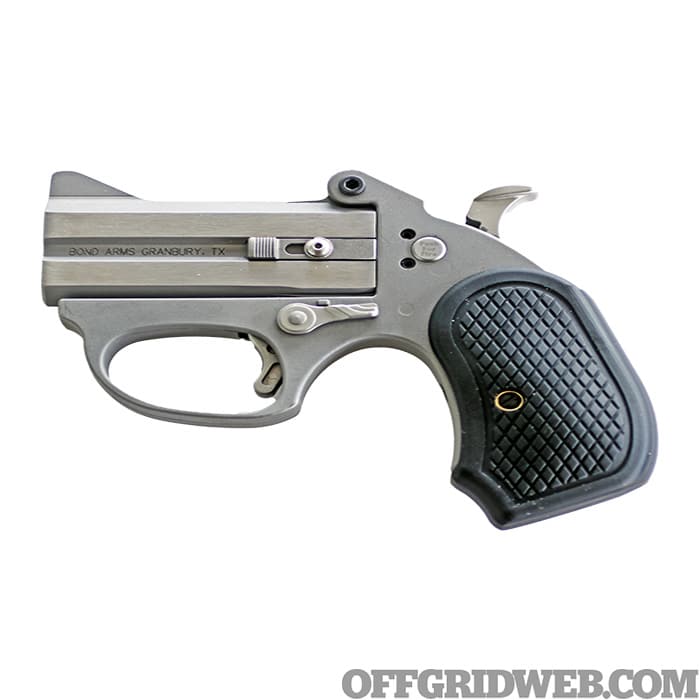
Bond Arms is an innovative manufacturer of firearms based in Texas. Although mostly known for their improved versions of the classic Derringer, Bond makes semi-auto pistols and is debuting a radical new lever gun sometime this year (we hope). Having personally viewed some prototypes from Gordon Bond’s “skunkworks,” I can attest to the brilliant minds behind their firearms. The Honey B is an entry-level Bond Derringer with a matte bead-blasted frame as opposed to a shiny finish. A full-size grip frame and a decent front sight make it easy to hold and shoot. Interchangeable sets of barrels chambered in .22 LR, .380 ACP, .38 Special, and 9mm can be ordered as well.
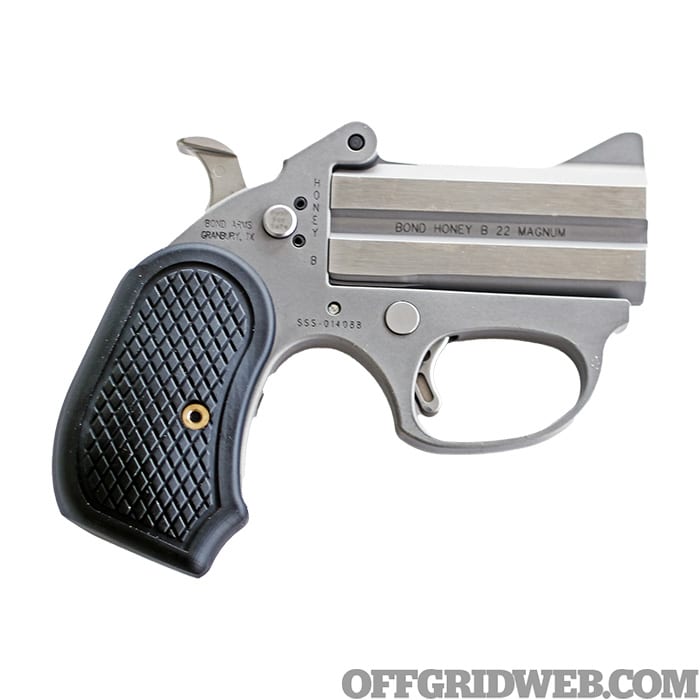
Pros:
Cons:
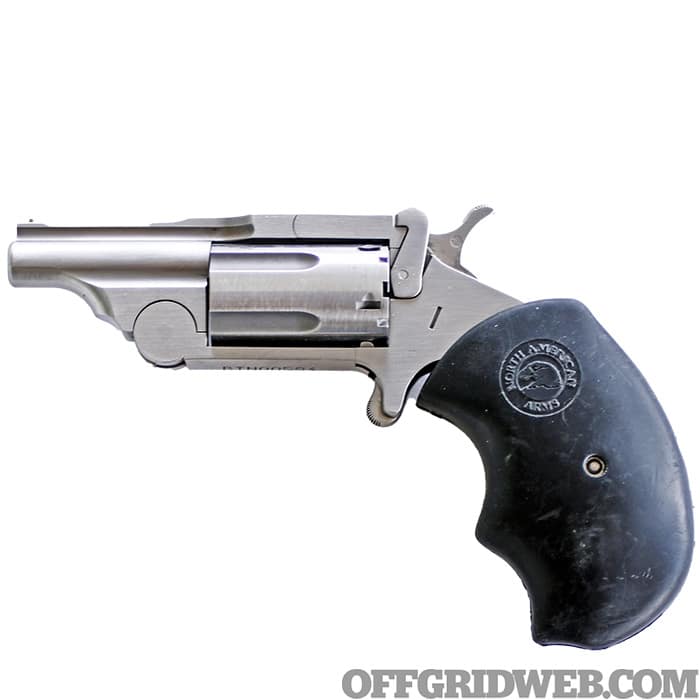
North American Arms built its reputation by manufacturing tiny five-shot single-action rimfire revolvers. Common complaints were that they were slow to reload, slow to eject spent casings, and hard to get a good grip on. They addressed the grip issue early on by offering larger grips, but for the most part, loading, unloading, or ejecting empty cases meant completely removing the cylinder from the gun. The company’s answer was to release a top-break model that could be loaded or unloaded by moving a latch on the top of the frame. The Ranger II completely transformed this design by going back 150 years in time. An optional .22 LR cylinder is available.
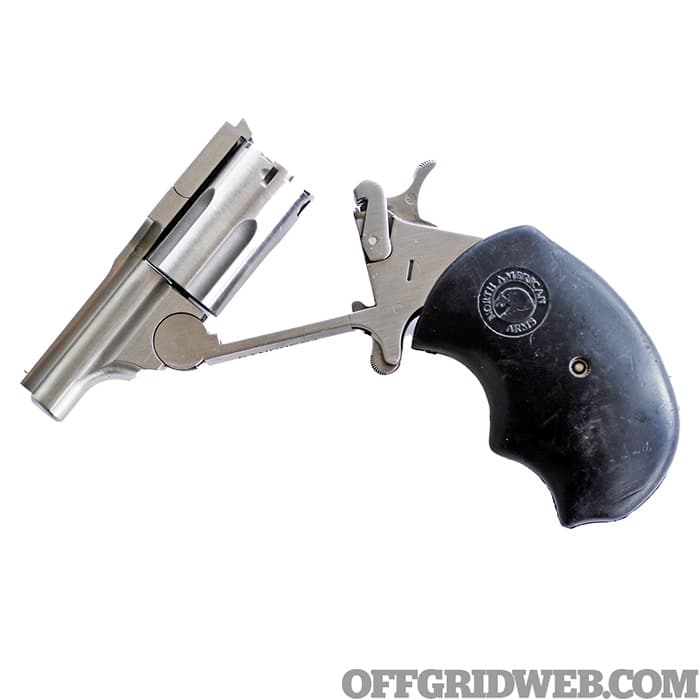
Pros:
Cons:
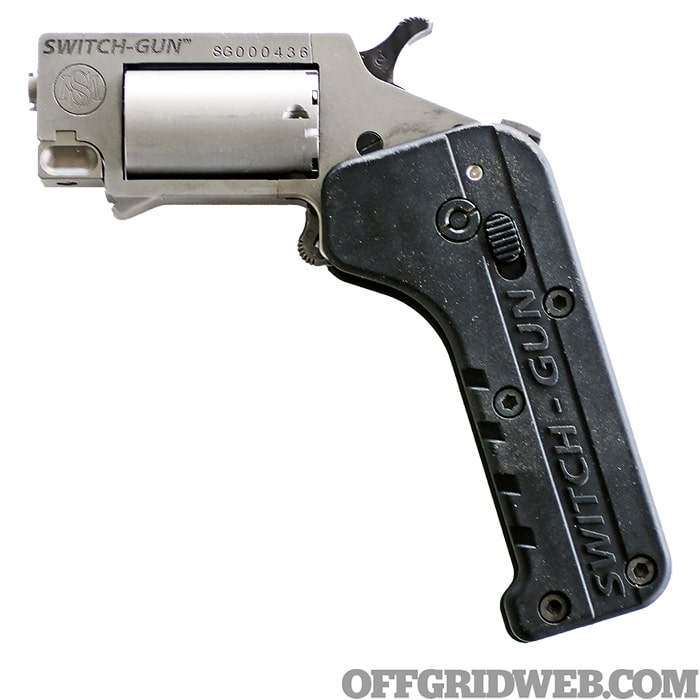
Standard Manufacturing is the manufacturing arm of Connecticut Shotgun, a purveyor of fine sporting shotguns. In addition to craftsmen renowned for engraving and metal finishing, they have a staff of engineers who bring to life one-of-a-kind firearms from classic single-action six-guns and 1911s to unique concepts geared toward personal protection. Such is the Switch Gun, a compact five-shot single-action rimfire revolver that folds into its own grip and deploys with the press of a button into firing mode like an automatic knife. This model is .22 WMR, but a .22 LR version and a conversion cylinder are available.
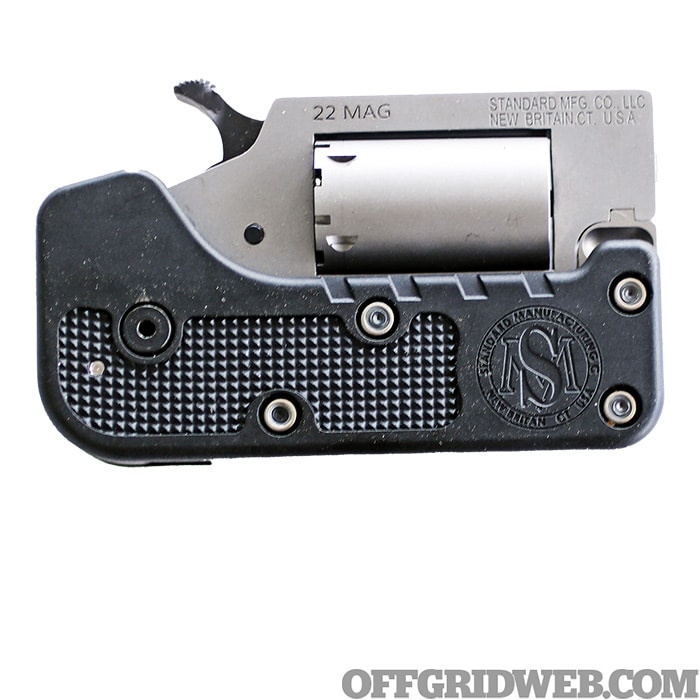
Pros:
Cons:
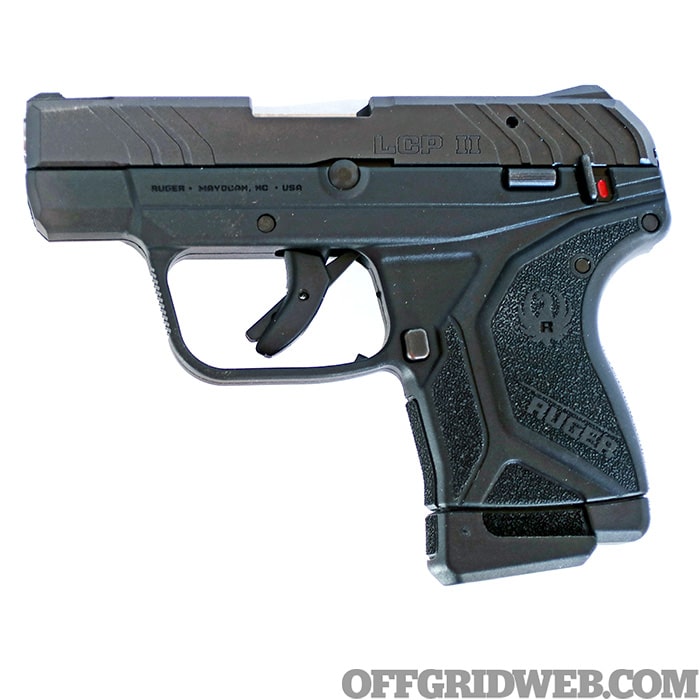
Ruger ventured into bold new territory over a decade ago when they released their LCP pistol in .380 ACP. It was the company’s first true concealed carry pistol. Different variants have been offered but the one we’re looking at here is the LCP II chambered in .22 LR, which holds 10+1 rounds of ammunition. Recoil is mild and accuracy may be the best of all the others in this review. An aftermarket threaded barrel is available for suppressed shooting. Stainless and polymer construction allow for ease of maintenance on this blowback-operated pistol. It ships with a branded nylon pocket holster.
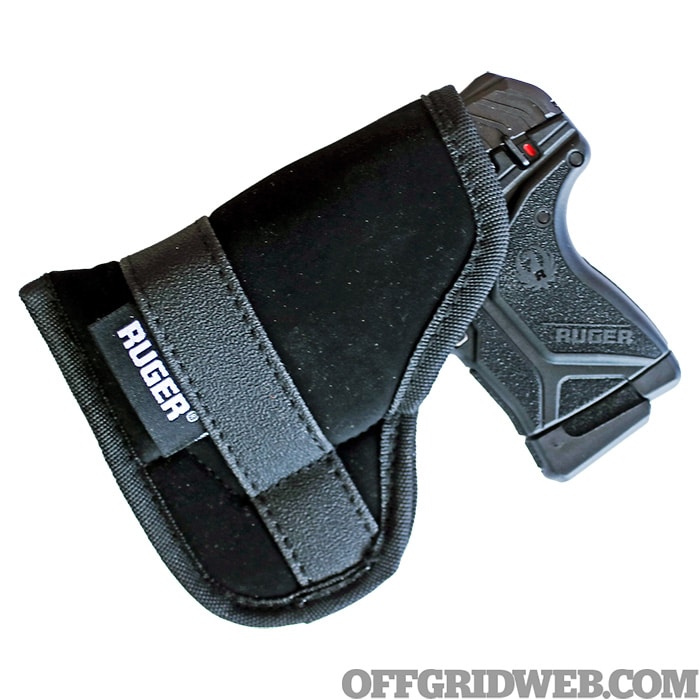
Pros:
Cons:
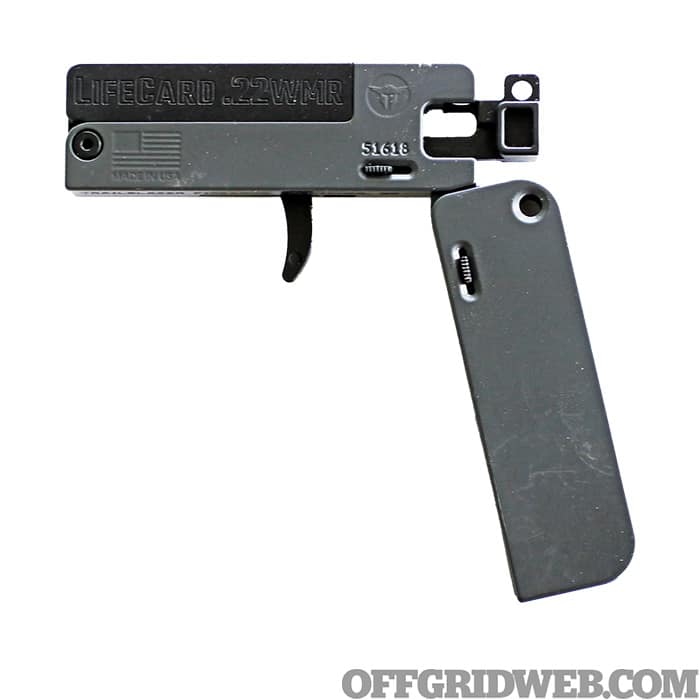
Trailblazer Firearms is another company that makes unique firearms that can be folded and stored safely in a compact mode, ready to unfold in seconds. Resembling a camera battery when folded, the Life Card can be stored in a pocket, pouch, or an empty Altoids tin until needed. By manipulating a few levers, the Life Card can be deployed in a matter of seconds. It is available in .22 WMR and .22 LR. There is even a threaded barrel version intended for use with a silencer. Even though it is a single-shot and requires manual cocking of the striker, there is an onboard compartment allowing for the storage of three extra rounds of ammunition.
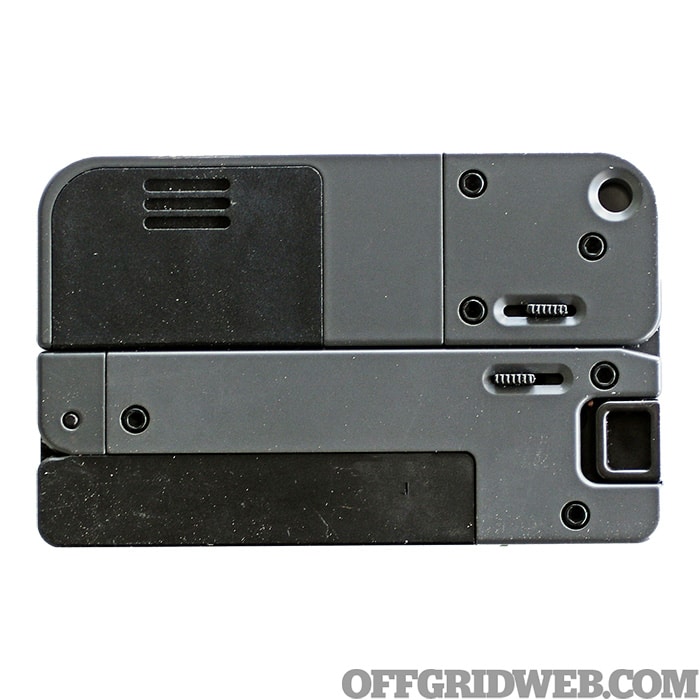
Pros:
Cons:
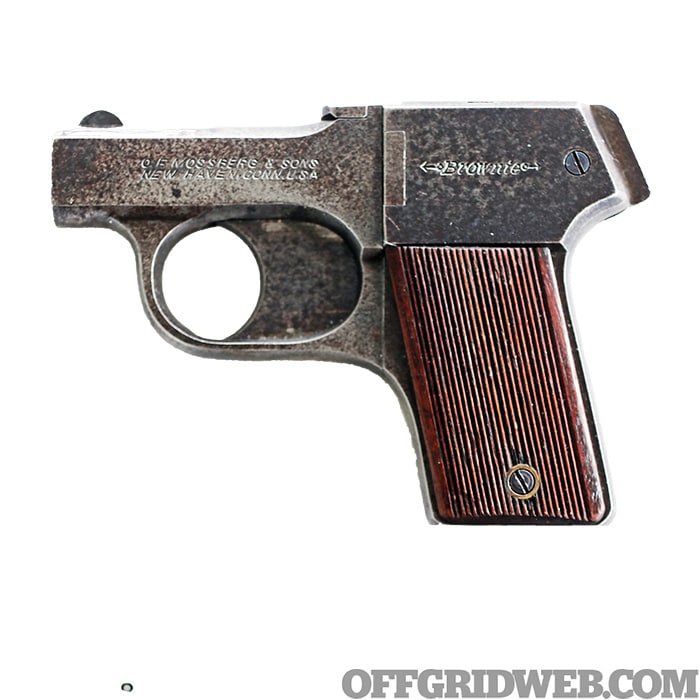
This one hasn’t been made in over 90 years, but it was almost perfect for its time. This was Mossberg’s first effort at a handgun over 100 years ago. About 30,000 were produced. It is essentially a four-shot .22 LR Derringer with an internal hammer and rotating firing pin. There are no external moving parts, meaning it can be fired from inside a pocket without worry of a malfunction. There are no ejectors or extractors, so empty cases (or unfired live ammo) need to be poked out with a cleaning rod. They originally included a piece of spring steel in the grip panel to accomplish this, but they’re as rare as hen’s teeth.
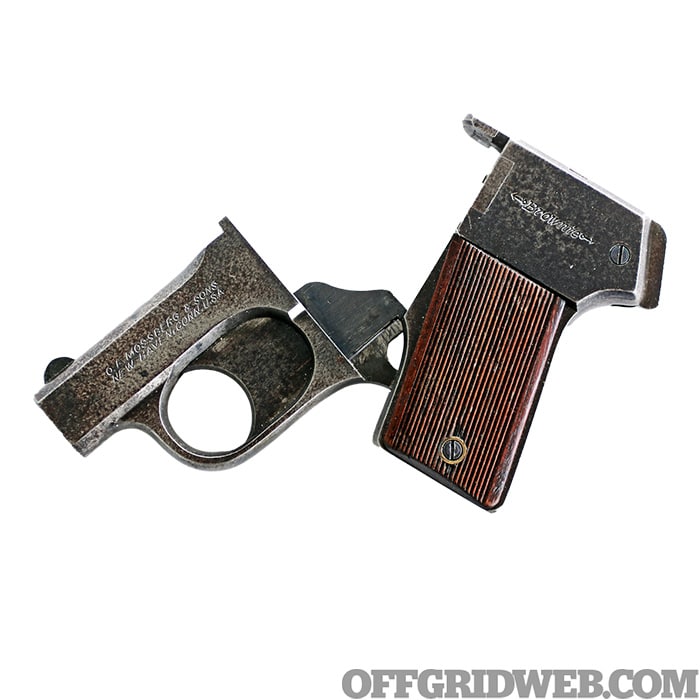
Pros:
Cons:
Subscribe to Recoil Offgrid's free newsletter for more content like this.
Editor's Note: This article has been modified from its original print version for the web.
 STAY SAFE: Download a Free copy of the OFFGRID Outbreak Issue
STAY SAFE: Download a Free copy of the OFFGRID Outbreak Issue
No Comments